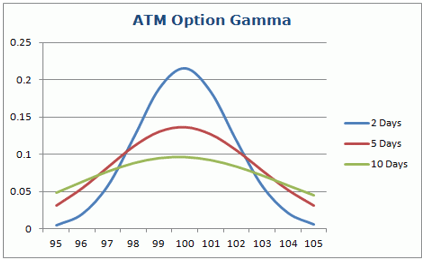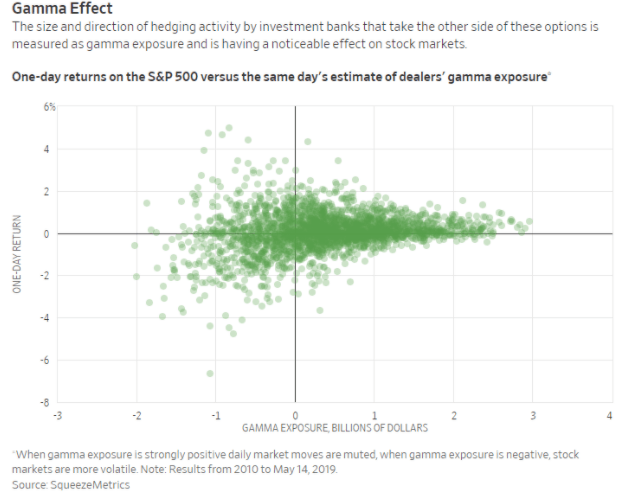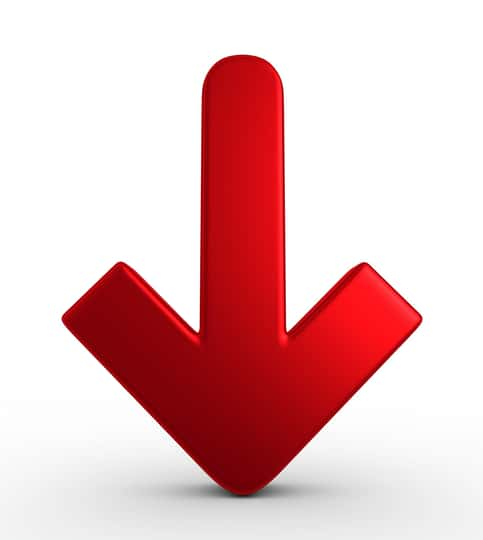After a record two-month run, the “SPDR 500 (SPY - Get Rating)” suffered it’s 5th largest one day decline on Thursday. Yesterday we asked whether this was the start of a larger correction. Today, I want to discuss how the nature and structure of the options market could lead to another swoon or possible crash.
First, we start with the put/call ratio has dropped to near-record low levels, meaning over 3 calls were being purchased for every put; it got to the point where skew was completely inverted as people were paying 3x-4x as much for calls than puts. It also means the normal safety net owning puts as portfolio protection has some major holes in it. So, when stocks start falling the only risk management tool is stop-loss orders, which basically translates into selling at the lows.
The second is how options prices behave and how professionals, such as hedge funds tend to be positioned. Back in my days as a market maker on the floor of the “Chicago Board of Options Exchange (CBOE - Get Rating)” the third Friday of the month was known as ‘gamma day.’ That was prior to 2005 when weekly options were introduced—to show my age, I was on the CBOE from 1991-2002—and ever since ‘gamma day’ has been a weekly occurrence.
Actually, with some Index and ETFs like SPY having expiration three times a week (Monday, Wednesday Friday) Gamma scalping has become a full-time feature of the trading landscape and as this article from the Wall Street Journal highlights, it may be warping price and volatility levels. The nut of the piece is that “There’s a powerful force at work in markets that helps explain why stocks seem to do nothing for long periods and then suddenly lurch into activity. Market players have noticed this force—known by some as a “gamma trap”
Before getting to implications, let’s drill down into the definition and mechanics of what an options Gamma is. Gamma is a second derivative and measures how much your delta will change per unit change in price. It means that as prices rise your delta increases. Or more pertinently as prices decline your delta turns more negative, meaning you get longer as prices go up, and shorter as prices decline. Sometimes people confuse gamma with vega which is a measure of volatility. They sometimes act in concert but are not related. Kinda like country and western. I have no idea what that means but you get the gist.
Notice how an options delta becomes more sensitive as expiration approaches. Essentially, on expiration day an ATM option acts just like owning or shorting the underlying shares. As time approaches expiration, the gamma level of an option increases. Like time premium levels, gamma also falls under the normal distribution curve with the at-the-money (ATM) options having the highest levels of gamma. This is why most people who gamma scalp elect to do so by using the ATM options to buy (or sell if reverse gamma scalping) straddles and strangles.
Here is a graph of the gamma curve:

Gamma scalping is the process of adjusting the deltas of a long option premium and long gamma portfolio of options in an attempt to scalp enough money to offset the time decay of the position. In practice, at least in my day, it simply meant buying both a put and call (usually ATM) on the day of expiration and then buying or selling shares as the underlying price rose or fell, to pick up incremental or ‘scalp small profits’ while maintaining a delta neutral position. This had the tendency to dampen volatility because as prices rose market makers would sell stock or buy stock as prices fell. This often led to the phenomenon known as pinning the strike price at expiration.
A brief discussion on pinning. Oftentimes stocks have a tendency to “pin” to an option strike price on expiration, meaning the stock gravitates to a nearby strike as the close of expiration day trading approaches. This “pin” phenomenon arises from hedging pressures, which can create increased demand for the underlying stock below the strike price and increased supply above the strike, as traders and market makers buy or sell stock to offset expiring options positions. As the stock rises, the market maker’s portfolio will become more delta positive. What’s the easiest way to remove delta? (What instrument has the highest delta? Stock.) They sell stock. When large sell orders go to the market, what does the stock price do – rise or fall? It falls.
As the stock falls below its target, its portfolio becomes more delta negative. What’s the best way to add delta to your portfolio? Buy stock, which makes the price do what? Rise. The net result that it strikes with large open interest, which acts like a magnet, pulling the stock price as expiration draws nearer. But one needs to remember that magnets can also repel. And when a strong move is underway the options can accentuate or magnify the move. As each strike gets traded through those short (the calls in the case of this rally) need to buy to cover to limit loss. This propels prices to the next level. This brings us back to gamma.
If you are short gamma (net short options and hence volatility) one usually has to take a defensive stance one large move occurs trades which put them at high risk of compounding losses and setting off a self-fulling bout of ever increasing volatility. Meaning, as prices rise one is forced to buy, or as prices fall one is forced to sell. This creates a feedback loop. We are already seeing that days with higher negative gamma are producing larger negative returns.

We saw in February of 2018 how an overabundance of people’s short volatility of VIX products, which is the ultimate negative gamma position, led to Black Swan known as the VIC apocalypse resulting in many funds going out of business and trillions of dollars in losses.
To learn more about Steve Smith’s approach to trading and access to his Option360 click here.
Want More Great Investing Ideas?
9 “BUY THE DIP” Growth Stocks for 2020
Bull Market or Bull S#*t? How to trade today’s stock bubble and prepare for the return of the bear market.
7 “Safe-Haven” Dividend Stocks for Turbulent Times
SPY shares were trading at $304.69 per share on Friday morning, up $4.08 (+1.36%). Year-to-date, SPY has declined -4.78%, versus a % rise in the benchmark S&P 500 index during the same period.
About the Author: Option Sensei

Steve has more than 30 years of investment experience with an expertise in options trading. He’s written for TheStreet.com, Minyanville and currently for Option Sensei. Learn more about Steve’s background, along with links to his most recent articles. More...
More Resources for the Stocks in this Article
| Ticker | POWR Rating | Industry Rank | Rank in Industry |
| SPY | Get Rating | Get Rating | Get Rating |
| CBOE | Get Rating | Get Rating | Get Rating |






